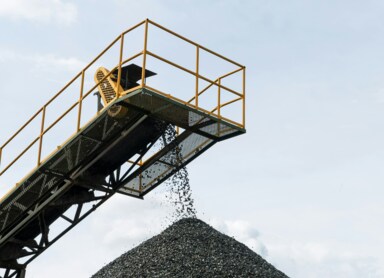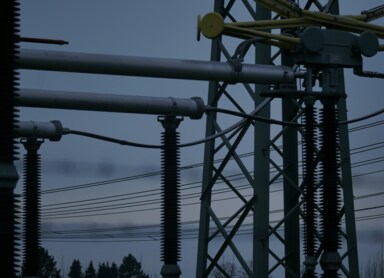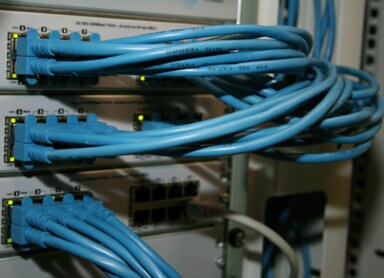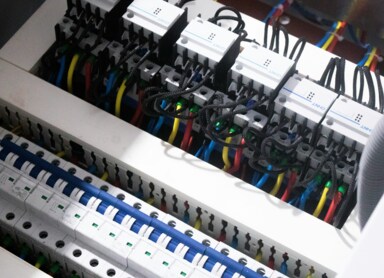The Energy Supply Chain – How Does It Work?
The energy supply chain is an extensive and fairly complex process. It begins with the extraction and processing of raw materials. Then, energy is generated, distributed, and delivered to end users. The process of energy transformation, along with the continuously growing demand for power, requires a solid understanding of supply chain mechanisms.
Energy Supply Chain – Basic Concepts and Components
The energy supply chain consists of numerous processes, jointly managed by multiple entities. Its efficiency depends on the stable and effective collaboration of all involved parties. Each element of the supply chain plays a key role in shaping the energy market and its resilience to dynamic technological, economic, and environmental changes.
At the beginning of the chain is the acquisition of energy resources. These can be conventional, such as natural gas, crude oil, or coal, or renewable, like solar or wind energy. The extraction of raw materials already involves numerous challenges—legal, operational, financial, and environmental. For renewable energy, technology and the ability to integrate with the existing infrastructure in a given region are crucial. Energy generation takes place in power plants and distributed installations. In conventional energy models, large, centralized power-generating units dominate. However, the growth of renewable energy is increasingly shifting the focus toward decentralized, local production sites, such as wind farms and photovoltaic installations.
Another critical component of the energy supply chain is distribution and transmission systems. Power grids and appropriate infrastructure enable the long-distance transport of energy, and their stability and continuous operation are fundamental to the reliability of the entire system. The final element of the chain is the end user — both industrial clients and individual consumers. Every part of the chain is tightly interconnected — disruptions at any stage have consequences for the entire system.
Supply Chain Diagram – How Does Energy Delivery Work?
The energy delivery process starts with resource extraction and ends with transforming raw materials into usable energy forms for end users. Regardless of whether the source is conventional or renewable, the structure is broadly similar. Acquiring raw materials — or selecting locations where renewable energy infrastructure can be effectively deployed — forms the foundation of any supply chain. Modern energy models increasingly emphasize diversifying energy sources and encouraging individual users to produce and store their own energy.
An Example Energy Supply Chain – Analysis and Case Study
A good example of an energy supply chain is that of an imported resource, such as natural gas. This clearly illustrates the complexity and logistical challenges of the system. Natural gas extracted in Norway (one of the leading producers) is transported to processing terminals where it is purified. At this stage, extraction infrastructure and stable production capacity are crucial. The gas is then transmitted over long distances, via pipelines or as liquefied natural gas (LNG). For such transport to succeed, uninterrupted access to a reliable distribution network is vital — this is a critical point from an energy security perspective.
Once the gas reaches distribution centers, it is stored and then delivered to national transmission systems. Storage facilities play a key role in balancing demand — they are filled during the summer to ensure stable supplies during the heating season. Managing reserves and reacting quickly to changing demand is essential, especially during crises like sudden supply disruptions. The final stage is the distribution of gas to end users. This example shows that the energy supply chain is far from static. It is a dynamic system, highly sensitive to shifting market conditions and geopolitical factors.
Sustainable Supply Chain – Benefits and Challenges
A sustainable supply chain aims to minimize the negative environmental impact of the energy sector, improve resource efficiency, and ensure long-term energy stability and security. However, it faces many technological, economic, and regulatory challenges.
The main goal of a sustainable supply chain is to reduce greenhouse gas emissions and lessen dependence on imported fossil fuels. Transitioning to renewable energy sources significantly cuts the carbon footprint and enhances energy security. From an economic perspective, a sustainable chain focuses on optimizing operational costs and insulating the system from volatile market fluctuations. Companies investing in energy transition processes can also benefit from financial incentives and regulatory support.
One of the greatest challenges is the need for massive investments in infrastructure and technology. Upgrading transmission systems, integrating distributed energy sources, and developing storage solutions require significant funding, which is not always easy to secure. Additionally, legal regulations and national energy policies often struggle to keep pace with technological change, which can slow down the adoption of innovative solutions.
Read also: Fit for 55 Package – What Does This Climate Package Entail?
The Green Supply Chain – How Does It Impact the Environment?
The most important element of a green supply chain is the shift toward low-emission energy sources. Reducing fossil fuel use in favor of renewables such as wind and solar power substantially lowers carbon dioxide and other harmful emissions. Another key aspect is optimizing the entire production process, which minimizes transmission losses and enables more efficient grid management, maximizing resource potential. A critical environmental benefit is the improvement of air quality.
The green energy supply chain has enormous potential to protect the environment and combat climate change. Implementing sustainable practices in the energy sector leads to more efficient resource use, better air quality, and reduced greenhouse gas emissions. Transforming the conventional energy supply chain into a green one requires time and financial investment. However, its implementation is essential in the face of global climate and societal challenges.






